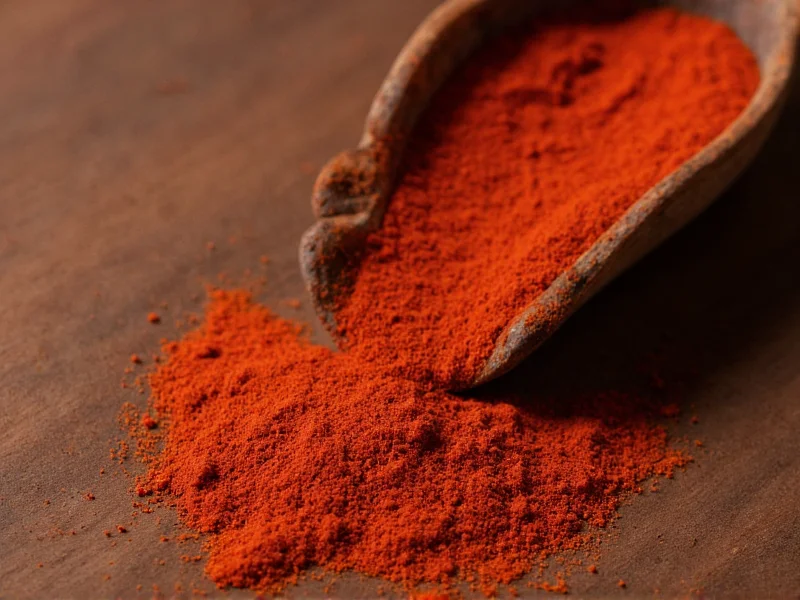Understanding smoked paprika's heat profile is essential for home cooks and culinary professionals alike. Unlike regular paprika, which is simply ground dried peppers, smoked paprika undergoes a traditional smoking process over oak or fruit woods that imparts its distinctive flavor. The critical factor determining heat level isn't the smoking process itself, but rather the specific pepper variety used in production.
Types of Smoked Paprika and Their Heat Levels
Smoked paprika comes in three primary varieties, each with distinct heat characteristics:
| Type | Origin | Scoville Units | Heat Description |
|---|---|---|---|
| Sweet Smoked (Pimentón Dulce) | Spain (La Vera region) | 0-500 SHU | No detectable heat, pure smoky sweetness |
| Bittersweet (Pimentón Agridulce) | Spain | 500-1,000 SHU | Very mild warmth with complex flavor |
| Hot Smoked (Pimentón Picante) | Spain/Hungary | 1,000-2,000 SHU | Moderate heat with smoky depth |
Why Smoked Paprika Isn't Automatically Spicy
The misconception that all smoked paprika is hot stems from confusing the smoking process with capsaicin content. Smoking peppers adds flavor complexity but doesn't increase capsaicin—the compound responsible for heat. Traditional Spanish smoked paprika (pimentón) primarily uses sweet pimientos de Padrón or ñora peppers, which naturally lack significant heat.
When shopping for smoked paprika, check the label for specific heat indicators. Spanish varieties clearly state dulce (sweet), agridulce (bittersweet), or picante (hot). Hungarian smoked paprika may simply indicate "sweet" or "hot" without the Spanish terminology.
Comparing Heat Levels to Common Spices
To contextualize smoked paprika's heat, consider these comparisons:
- Sweet smoked paprika: Similar heat level to bell peppers (zero heat)
- Bittersweet variety: Comparable to mild banana peppers
- Hot smoked paprika: Falls between poblano and jalapeño peppers in intensity
For reference, hot smoked paprika measures around 1,500 Scoville Heat Units (SHU), while cayenne pepper ranges from 30,000-50,000 SHU and habaneros reach 100,000-350,000 SHU. This makes even hot smoked paprika significantly milder than many common chili powders.
Factors Influencing Smoked Paprika Heat
Several elements affect the final heat profile:
Pepper Variety Selection
Producers carefully select specific pepper cultivars. Spanish pimentón producers traditionally use non-pungent varieties, while some Hungarian and American producers may incorporate hotter peppers for their smoked versions.
Processing Methods
The smoking duration and wood type (typically oak or fruit woods) impact flavor but not heat level. Longer smoking creates deeper smokiness without increasing spiciness.
Regional Differences
Authentic Spanish smoked paprika from La Vera PDO region follows strict production standards that typically produce mild varieties. Hungarian smoked paprika sometimes incorporates hotter pepper varieties, resulting in more noticeable heat.
Culinary Applications Based on Heat Level
Understanding smoked paprika's heat profile allows for precise culinary application:
Sweet Smoked Paprika Uses
Ideal for dishes where smokiness is desired without heat: deviled eggs, potato salads, roasted vegetables, and creamy sauces. This variety enhances flavor without altering the dish's heat profile—perfect for is smoked paprika hot for sensitive palates concerns.
Hot Smoked Paprika Applications
Use in recipes needing subtle heat with smoky depth: chorizo, paella, barbecue rubs, and bean stews. When substituting for cayenne, use 3-4 times the amount of hot smoked paprika to achieve similar heat levels while adding smokiness.
Substituting Smoked Paprika in Recipes
If you're wondering is smoked paprika hot enough for my recipe, consider these substitution guidelines:
- For sweet smoked paprika: Regular paprika + 1/4 tsp liquid smoke per tablespoon
- For hot smoked paprika: Regular paprika + pinch of cayenne + liquid smoke
- For heat without smoke: Add cayenne or red pepper flakes separately
Remember that smoked paprika's primary contribution is flavor complexity, not heat. Even hot varieties provide more depth than burn, making them versatile for smoked paprika heat level in cooking applications where balanced flavor is essential.
Storage Tips to Maintain Flavor Integrity
Preserve your smoked paprika's flavor profile by storing it in an airtight container away from light and heat. Properly stored, it maintains optimal flavor for 1-2 years. Exposure to air or moisture won't increase heat but will diminish the delicate smoky notes that distinguish it from regular paprika.











 浙公网安备
33010002000092号
浙公网安备
33010002000092号 浙B2-20120091-4
浙B2-20120091-4